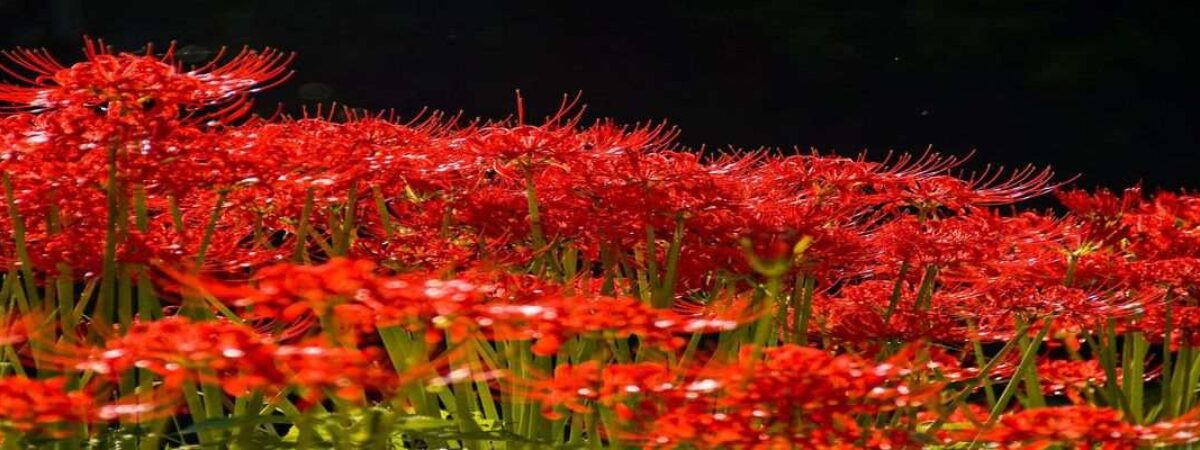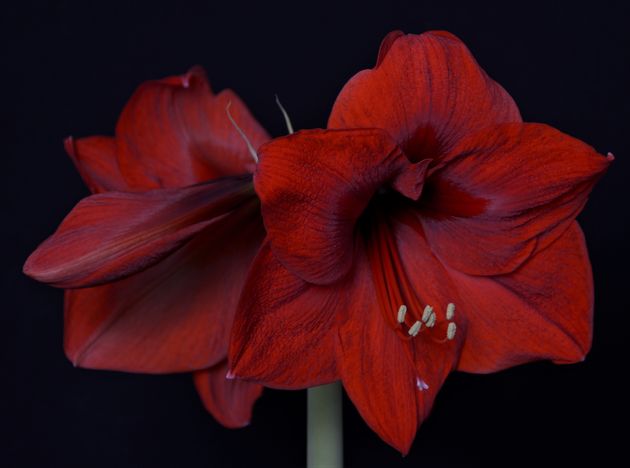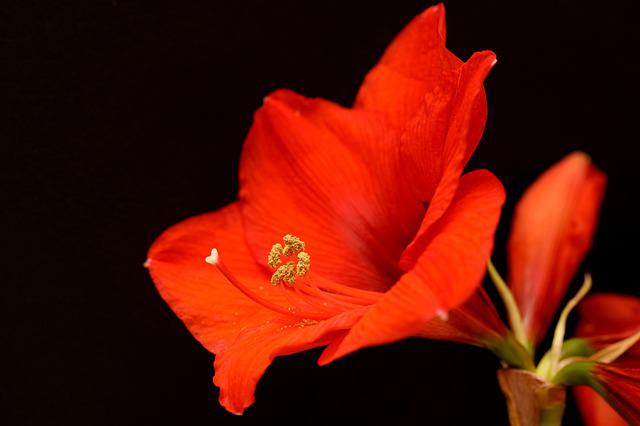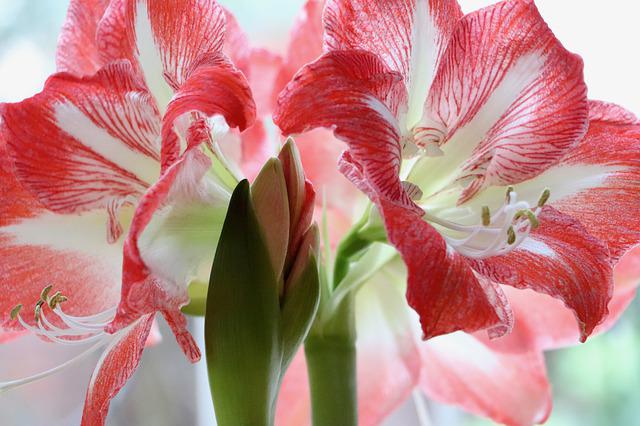Amaryllis, a beautiful flowering plant prized for its exotic trumpet-shaped flowers, 1 to 2 feet of leafless stalks, and scapes, add beautiful and dramatic colors to our home and garden. Whether the plant grows its first or fiftieth bulb, there is high anticipation for the plant owner when the green and large bud starts emerging from a beefy amaryllis bulb.
So bringing this beautiful exotic plant to your home not only can add beauty to your home but also make beautiful gifts to gardeners from beginners to experts. Then let’s dive into the article below to find out how to grow and care for the amaryllis plant.
Plant overview
Amaryllis word comes from the Greek word amarysso which means to sparkle. So the plant itself tells that it is a beautiful plant that sparkles.
Being native to Africa, Central, and South America, these beautiful bulbs are generally purchased and grown as houseplants.
The flowers of these plants are beautiful that can grow up to 4 to 10 inches in size in the shades of red white, pink, salmon, rose, apricot, or deep burgundy and they can be either single or double in form. Some varieties also can be bicolor like having petals with a different edge color.
Varieties of amaryllis plant
There are hundreds of varieties of amaryllis plants available on the earth depending on the color. But it is depended on you which variety appeals to you the most.
However, we have given certain popular varieties that you can plant in your locality.
Samba
Samba is one of the popular varieties of amaryllis plants that has large red ruffled blooms with white markings.
Apple Blossom
Apple blossom is the popular variety of amaryllis plants that has blooms that mix pink and white, with green throats.
Faro
This variety of amaryllis plants has delicate flowers in pale salmon and white. The blooms in this plant are smaller and more delicate than with most varieties.
Summertime
This variety bears large 7-inch blooms in a unique watermelon pink to dark rose hue color along with greenish centers.
Matterhorn
If you are looking for pure white amaryllis, this can be a good choice for you. The throats of the plant are yellow-green in color.
How to plant amaryllis plant?
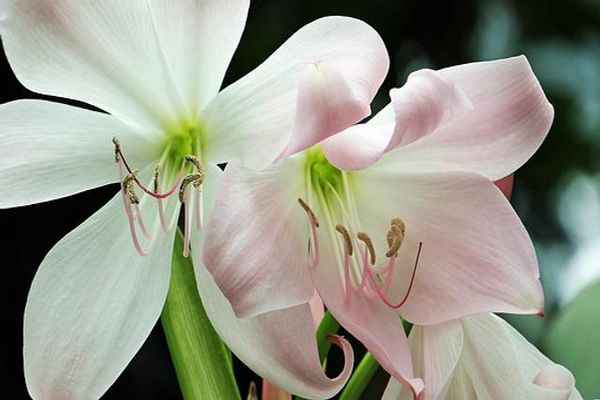
The Amaryllis plant takes up to six to eight weeks to bloom after planting. Being it takes this much time to bloom, you can enjoy flowers right up to Easter by using the eight-week rule; just count back from the desired blooming period, by staggering the plant. If you want your plant to bloom at Christmas, plant your bulbs in September.
Starting from spidery cybisters to 75cm-tall giants, all the varieties of amaryllis have the same requirements. They grow best in a rich, very well-drained growing medium, in a warm, light spot. If you provide this by incorporating grit or sand and leaf mold or well-rotted manure into multi-purpose compost, your plant will shower you with a healthy bloom.
Amaryllis perform their best if they sat tightly in their containers, so choose one that allows a couple of centimeters of compost around the bulb. Soak your amaryllis bulb and its roots in a bowl of tepid water for a few hours before potting it up.
Then half fill your pot where your plant will be planted with peat-free, multi-purpose compost, breaking up any lumps and lightly firming it in place with your fingers. Keep the bulb in its place, making sure that the top sits just above the pot. Fill compost and firm gently around the bulb. Water it well and allow the pot to drain. Add a layer of horticultural grit around the bulb, to keep the compost moist.
Then place your amaryllis in a cool room with plenty of sun light as this will allow your plant to develop slowly, maintaining a strong flower shoot and leaves. Once the plant starts flowering, you might need to support the flower spikes with canes.
How do care for the amaryllis plant?
The growing and caring guide of amaryllis vary depending on where you are growing it, indoor or outdoor, and when you want it to bloom.
However, the caring guide of this plant involves the following.
Light
Amaryllis requires full sun to part shade condition to grow. The best environment of this plant is outdoor, bright shade.
If you are growing this plant indoors, they may prefer morning shade and bright shade in the afternoon.
Soil
Amaryllis requires well-drained, fertile soil to grow when you are growing it outdoors. If you are growing it as a potted bulb, it is recommended to use a good quality well-draining sandy loam potting mix.
Water
When it comes to watering the plant, water your amaryllis when the top soil becomes dry during the growing period. Amaryllis requires a dry rest period after flowering to reset the bulbs for the future.
So forcing this plant into seasonal blooms requires a careful manipulation or watering schedule.
Temperature
Being a tropical plant, amaryllis prefers warm temperatures. When growing outdoor, they require a hardy zone of 7 to 8.
Gardeners sometimes need to overwinter them in the garden if the soil is heavily mulched.
Fertilizer
Amaryllis is the heavy feeder. The amaryllis plant requires a half-strength, water-soluble fertilizer every two to three weeks of the owing period.
How to grow amaryllis in pots?
Being a houseplant, amaryllis grows best in narrow pots. If you are planting your plant in a pot, then consider a pot made up of plastic, ceramic, metal, and Terracotta.
Below is the process of growing amaryllis in a pot
- The first and most important step of increasing amaryllis is choosing a healthy bulb to grow that should be firm and dry. It should not have any signs of mold, decay, or injury.
- Then the next important step is to choose a container where the plant will grow. It is recommended to choose a container that has one or more drainage holes in the bottom and drains easily. The chosen pot should be 1incg wider than the widest part of the bulb and twice the height of the bulb to allow space for good root development.
- After choosing a perfect container for your plant, fill it to the half with sterile, new potting soil that is rich in organic matter.
- Set your bulb in the container so that the roots can rest on the potting soil. Always consider sitting up the bulb above the edge of the container.
- Add more soil around the bulb by tapping it down until one-third of the bulb remains visible.
- Set your container in a sink where the plant can drain freely and water your soil until it thoroughly moist. Allow the pot to drain completely.
- Set the pot in a sunny place where it can get bright and indirect light.
Common pests and diseases
There are many insects that may attack your plant. So it is necessary to take proper care of the plant and careful inspection needed when purchasing bulbs and throughout its growth period.
The narcissus bulb fly may lay its egg in the bulb of the amaryllis plant iff you place the plant outdoor in summer.
Besides the narcissus bulb fly, the maggot larvae also can feed the outer scales of the bulb which may result in the foliage being wilted, yellow, and distorted and the plant dies eventually.
In such cases, insecticides might be ineffective. The only solution to protect your plant is to destroy the infected bulb as soon as possible.
The amaryllis plant is also prone to attack by the fungus and shows the symbol of a red blotch that may affect the appearance and health of this plant. To treat this disease, treat your bulbs with a systematic fungicide.
You may also like to read

